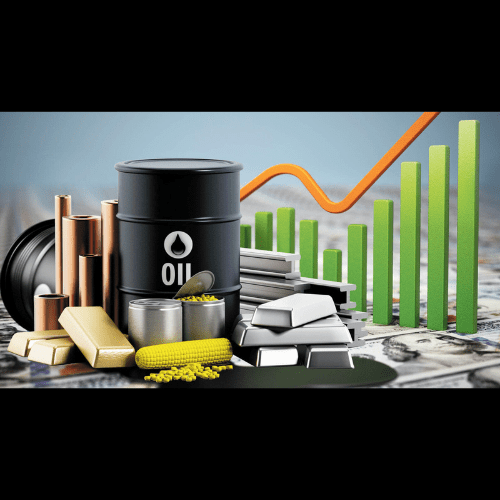Key Insights
Commodity prices have shown stability since late 2023, but crucial commodities like oil and copper have experienced significant increases in 2024. Understanding the intricate relationship between commodity prices, global economic trends, and inflation is essential for investors and policymakers.
The Role of Commodities in the Consumer Price Index
Commodities make up about 36% of the Consumer Price Index (CPI) calculated by the U.S. Bureau of Labor Statistics, with energy accounting for roughly 7% and food more than 13%. These commodities directly affect consumers’ daily expenses, such as groceries, fuel, and home heating.
However, the Federal Reserve (Fed), which aims to maintain moderate inflation, tends to focus less on the volatile categories like energy and food. Despite this, the recent increase in oil prices has contributed to stabilizing inflation rates that had been declining since mid-2022.
The Dynamics of Oil Prices
Rob Haworth, Senior Investment Strategy Director at U.S. Bank Wealth Management, notes that oil prices are influenced by factors such as global economic growth and OPEC’s production decisions. Early 2024 saw a rise in oil prices, but they have not reached dramatically higher levels, indicating a balanced supply-demand market.
Commodity prices rose by a mere 0.8% in 2023, a sharp contrast to the 12.1% increase in 2021 and 4.8% in 2022. For the 12 months ending in April 2024, prices were essentially flat, rising only 0.3%. Since October 2023, annualized price changes have been below 1%, and under 2% for the previous year.
Analyzing the Trajectory of Commodity Prices
Oil Prices: The volatility of oil prices is evident, driven by global events and economic shifts. In April 2020, oil prices plummeted to just above $10 per barrel due to the COVID-19 pandemic. By mid-2022, prices soared above $120 per barrel, influenced by supply concerns from Russia. From late 2022 to mid-2023, prices fluctuated between $70 and $80 per barrel, peaking at over $90 in September 2023 before dropping back to $70 by mid-November. Early 2024 saw prices rise again to over $80 per barrel.
Haworth highlights that demand for oil remains steady but could increase with the summer driving season in the northern hemisphere. OPEC+ extended voluntary production cuts through mid-2024 to maintain higher prices, while rising U.S. inventories help ease price pressures. Middle Eastern geopolitical tensions, such as the Israeli-Hamas conflict and Iran’s involvement, also play a critical role in oil price dynamics.
Other Commodities: The Russia-Ukraine conflict has added uncertainty to grain markets. Weather remains a significant factor for agricultural commodities like wheat, corn, and soybeans. Food prices have stabilized, with a 2.2% increase over the past year compared to the overall inflation rate of 3.4%.
Metals: Precious metals like gold saw significant price increases, with gold rising from $1,831 per ounce in October 2023 to $2,413 per ounce by mid-April 2024. Industrial metals, including those used in electric vehicle batteries like cobalt and nickel, are in high demand, contributing to price increases.
Investment Strategies in Commodity Markets
Investors often turn to commodities to hedge against inflation. According to Eric Freedman, Chief Investment Officer at U.S. Bank Wealth Management, the current high-inflation environment presents an opportunity to diversify portfolios with commodities. Investments in infrastructure, real estate, precious metals, and agricultural products can benefit from rising prices.
Infrastructure investments, including oil pipelines, airports, and toll roads, generate regular income and can be profitable during inflationary periods. Haworth advises that while commodities can be a tactical addition to a portfolio, they may not always yield durable returns. However, they historically provide positive returns in high-inflation environments like the current one.
Conclusion
Remain vigilant about the frequent fluctuations in commodity prices and seek opportunities to adjust your portfolio accordingly. The recent rise in commodity prices has offered up opportunities with miners and commodity related ETF’s.
by Steve Macalbry
Senior Editor,
BestGrowthStocks.Com
Disclaimer: This article is intended for informational purposes only. It should not be considered financial or investment advice. We do not hold any form of equity in the securities mentioned in this article. Always consult with a certified financial professional before making any financial decisions. Growth stocks carry a high degree of risk, and you could lose your entire investment.







